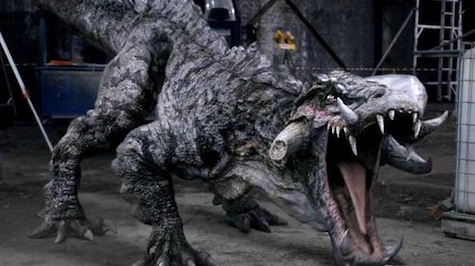All of today’s crocs look more or less the same. Alligators, gharials, crocodiles, and their cousins are all armored ambush predators that spend much of their time lurking in rivers and swamps. But the greater group to which they belong—the crocodylomorphs—evolved in dramatically-different ways. There were dinosaur-hunters, short-skulled herbivores, and marine hypercarnivores, just to name a few, within the group’s prehistoric ranks. If you’re looking for inspiration for a monster or fearsome creature from another world, prehistory’s crocs can be excellent muses.
Armadillosuchus
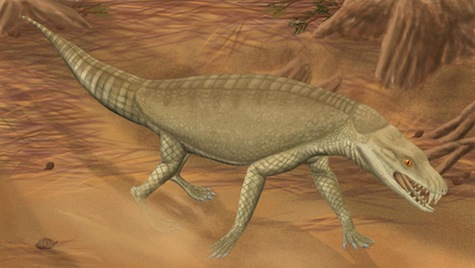
You could say this croc was an armadillo mimic, but that’d be getting it the wrong way around. Armadillosuchus evolved a secondary coat of movable body armor long before mammals did the same. Found in the 90 million year old rock of Brazil, this 7-foot-long croc had a bony neck shield and seven bands of pebbly scales called “mobile-banded body armor.” Add big hand claws and a fearsome dentition that included canine-like teeth, and Armadillosuchus was clearly one of the oddest of Mesozoic oddballs.
Dakosaurus
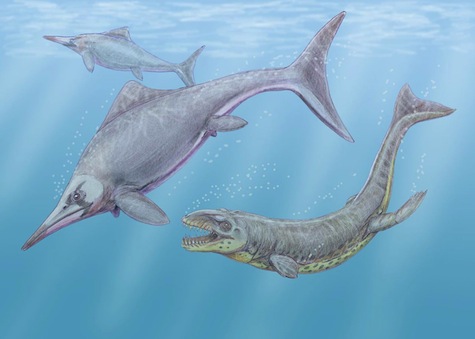
Today’s crocs haunt freshwater rivers, lakes, and swamps, but there used to be a specialized lineage that lived their entire lives at sea. Known as metriorhynchids, these crocs lost their body armor, evolved expanded tail fins, and became the reptilian equivalents of orcas. One long-lived form named Dakosaurus even fed in much the same way as today’s carnivorous marine mammals. Distinctive dental damage shows that the 15-foot-long Dakosaurus not only chomped large, struggling prey, but also could snap open its jaws to create a vacuum to suck in smaller morsels.
Laganosuchus

The popular name for Laganosuchus is “pancake croc”, so named for its flattened skull. But “toilet croc” is a better name. This 100 million year old predator’s skull is flat and long with a u-shaped lower jaw to match, making it look like a living commode seat. How the 20-foot-long predator employed such an unusual jaw is a mystery. While some paleontologists suspect that Laganosuchus waited for unwary little fish to swim into its cavernous mouth, other experts hypothesize that crocs with such expansive maws snapped at prey and quickly engulfed it in the same way that pelicans do.
Sebecus

In the wake of the mass extinction that wiped out the non-avian dinosaurs 66 million years ago, crocs stepped up to become the most fearsome predators of the Cenozoic world. One group—the sebecids—evolved in an especially-frightening direction, becoming blade-toothed carnivores that chased mammalian prey over prehistoric South America. Among them was Sebecus, a 56 million year old form that was over seven feet long and had a deep, narrow skull fitted with serrated, knife-like teeth. For a time, at least, crocs made it seem like an Age of Reptiles start again.
Kaprosuchus
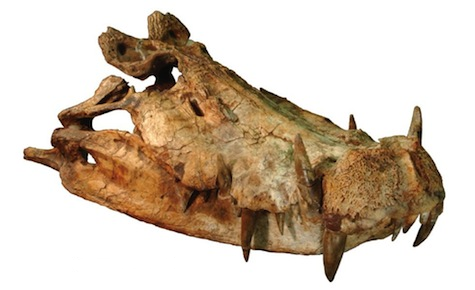
Crocs are known for having scary smiles, but few can match Kaprosuchus. This 100 million year old “boar croc” had three sets of elongated, tusk-like teeth near the front of its blunt snout. Exactly what sort of prey this unusual croc preferred is unknown, but a different anatomical quirk hints that Kaprosuchus was an accomplished hunter. The eyes of Kaprosuchus are high up on the skull and oriented forward to give the croc stereoscopic vision. This was a croc that could stare you down.
Pristichampsus

The name Pristichampsus translates to “saw croc”, but this roughly 46 million year old reptile is more widely known as the “hoofed croc.” That’s because the carnivore’s toes were not sharp claws but had a blunted, hoof-like appearance. Considering this along with the long legs and blade-like teeth of Pristichampsus, paleontologists hypothesize that this croc ran down protohorses and other mammals in the lush, dense forests that covered Europe during the Eocene.
Mekosuchus
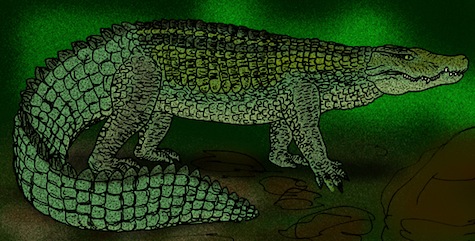
Not all prehistory’s weird crocs lived millions and millions of years ago. One lineage, endemic to the South Pacific, disappeared just before the dawn of history. Mekosuchus was one of these crocs, whose remains—so recent that they’re called “sub-fossils”—have been found on the islands of Caledonia and Vanuatu. Their extinction is a shame, especially as the slender Mekosuchus seems to have been quite different from other modern crocs in spending most of its time on land, subsisting on small prey and bivalves that it crushed with blunted back teeth.
Pakasuchus
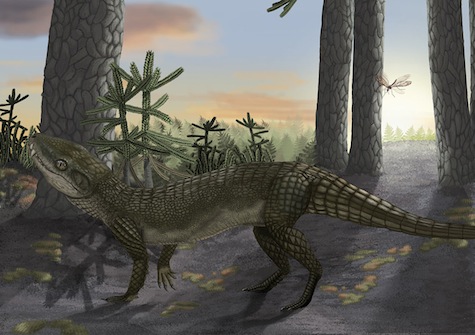
Crocs weren’t only long-jawed apex predators. Some of the strangest crocs were tiny, short-skulled omnivores that sheared leaves and crunched insects. Found in the 105 million year old rock of Tanzania, Pakasuchus was a long-legged, short-snouted little croc that had a diverse dental toolkit of piercers and crushers. Some of its molar-like teeth even contacted each other, much like a mammal’s, meaning that this was one of the few reptiles in the history of life that could actually chew.
Purussaurus

Fossil fans are well-aware of two of prehistory’s largest crocs—the 40-foot-long Deinosuchus and Sarcosuchus—but the equally-massive Purussaurus hasn’t received as much press. That’s a shame, especially since the huge caiman lived much closer to us in time. This hefty croc lurked in the swamps of northern South America around 8 million years ago, where it likely snapped up lungfish and perhaps the occasional river dolphin. And when Purussaurus bit into something big, one analysis suggests, the croc was able to perform a “death roll” to shred its prey.
Simosuchus
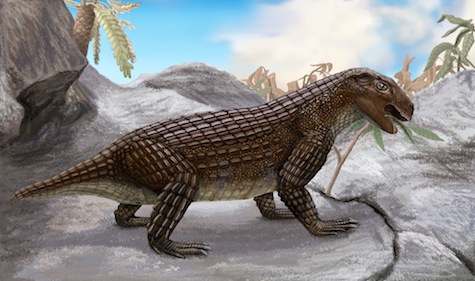
This 70 million year old herbivore may be the least croc-like of the crocodylomorphs. A “pug-nosed croc” found on Madagascar, Simosuchus was a small, stumpy creature with a broad snout and tiny teeth. And since the limbs of Simosuchus would have prevented the croc from running, paleontologists are confident that this Cretaceous weirdo grazed on low-lying plants rather than chasing down prey.
Brian Switek is the author of My Beloved Brontosaurus (recently out in paperback from Scientific American/Farrar, Straus and Giroux) and Written in Stone. He also writes the National Geographic blog Laelaps.










